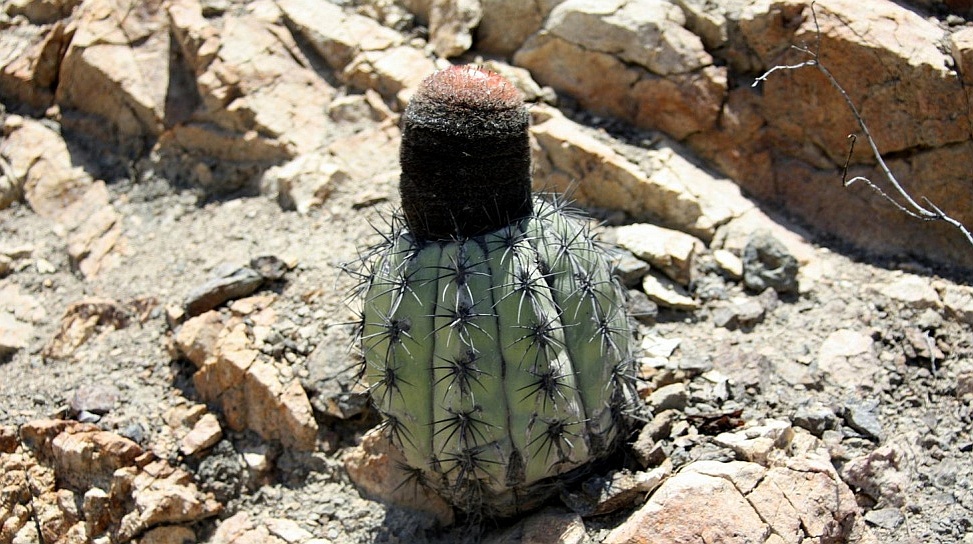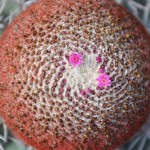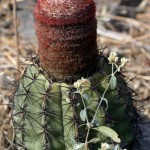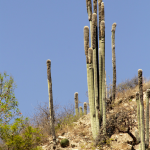(Photograph: Melocactus peruvianus)
Introduction
Many cacti have cephaliums (cephalia). Cephaliums are special parts of the plant that produce flowers. Only cephaliums produce flowers.
The Details
The most famous genus of cephalium-bearing cacti is Melocacatus. There are a lot of Melocactus species. Anderson (2001) recognized two-and-a-half dozen species. Melocactus species are found in South American and on some Caribbean Islands. Other genera of cacti with cephaliums are Buiningia, Cepalocereus, Disocactus, Epostoopsis, Facheiroa, and Pachycereus. There are many more.
Cephalium-bearing cacti have two growth types, juvenile and mature. The juvenile growth is what might be considered typical in most cacti. There is nothing special about it, per se. But the juvenile growth does not flower. Flowering only occurs on the cephalium. The cephalium is mature growth and it may not form until a cactus is many years old.
Cephaliums are packed with spines and typically woolly. They can be small or they can form a foot-tall column above a globular cactus (e.g., Melocactus). Cephaliums can be a different color than the juvenile growth. Perhaps the colors help attract pollinators.
Additional Reading: Espostoopsis and Facheiroa






